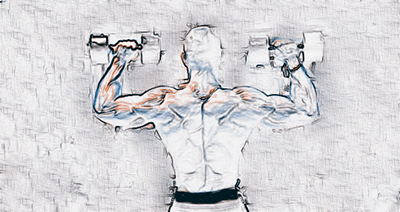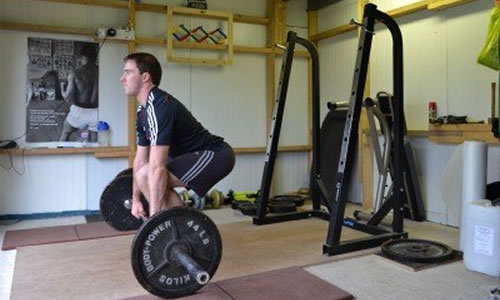Barbell rows are great. They are possibly the best exercise for your upper back development, with the possible exception of pull-ups. Forget cable exercises. Forget dumbbell rows. Forget machines. The barbell rows, the pull-ups, and the dead lift are what you need for a strong, beautiful, hydralisk-like back.

Why? Simply because the barbell rows will make you do more work. They are harder. They require a stronger grip. They requires stronger stabilizers. They will hit your back, your forearms, and the muscles you never even knew existed.
A tip – these muscles still show, and play a big part both in your performance and creating a balanced-looking physique. Having a huge chest and arms is great, but if your other muscles lag behind, you are just going to look unbalanced. You are going to fit into the stereotypical “Dumb Jock” niche that exists in the collective unconscious.
Work your stabilizers, and you will look like a Greek god, but bigger.
Barbell rows a fitness guide
Why do the barbell row?
All muscles. Literally. Except for your legs. That said, the back is the one doing most of the work. All of your back, that is. You will also get a decent workout for your pecs, abs, and obliques, plus hips, glutes, biceps and triceps. Of course, as always, when you train your stabilizers, you ensure that the strength gained on the exercise is not bound to the gym.
You’ll get stronger in all activities. That’s the great thing about this exercise; it hits your back, hard, works out a whole lot of other muscles, and the strength gains are easily translatable to sports. To put it simply, this is one of the best back exercises ever.
Oh, and barbell rows also help your deadlift and bench press improve. Great, huh? So how to do it?
How to do barbell rows
You’ve probably seen people in the gym doing something that resembles barbell rows. We say “resembles” because for most, barbell rows are associated with pulling the barbell off the racks, and then having it suspended in the air. This is wrong.
A barbell row, much like a deadlift, must start on the floor, and end on the floor. This isn’t really obvious for most people, but starting barbell rows from the floor lets you use more weight that you would otherwise by involving the hamstrings and glutes. This in turn makes your lats work harder on the upper portion of the lift. And that’s probably pretty okay unless you don’t want strong, well-developed lats.
So you’ve heard this advice, and placed the barbell on the floor. How do you approach this strange beast now? What are you to do?
You are to assume the deadlift stance and hover over the bar ominously. “Wait, deadlift stance? Barbell on the floor?… Are you trying to do us make more deadlifts?”.
No, not really. Despite all the similarities, there is a large difference between the deadlifts and the barbell rows. What you are doing here is first moving the barbell up without contracting your elbow. Start by extending your hips, but just a little bit, and you are keeping your spine in the same tension-filled position you would use when doing deadlifts. As the barbell leaves the ground, you bend the elbows and bring the barbell up, slamming it into the upper part of your belly.
This is just the general outline, though. The actual instructions are a bit more lengthy. What you are going to do is the following:
- Come up to the barbell lying on the floor and assume deadlift stance.
- Start the movement by keeping our arms straight while moving your chest up. This is the trickiest part. The chest moves up by raising the back angle. For this to work properly, you have to keep your back absolutely rigid, and raise it by contracting your hamstrings and glutes. Usually a 10o hip extension movement is enough to get the bar off the floor without giving it too much momentum.
- As the bar leaves the floor, your hips and back freeze in position, and you use the momentum, contracting your elbows and carrying the barbell higher up by extending shoulders and retracting the scapula.
- When the barbell hits your upper stomach, lower the barbell back to the floor, mirroring the movement pattern you used to raise it up. As always, don’t bend your lower back.
An interesting variation to this exercise is supinated barbell row. This variation uses the supine grip, and the idea behind it is that it lets you utilize the bicep more.
However, the supinated barbell row can cause elbow problems for inflexible people, especially if heavy weight is used. To avoid this, the weight should be increased gradually, and the grip should be narrower than normal to minimize grip position problems.
